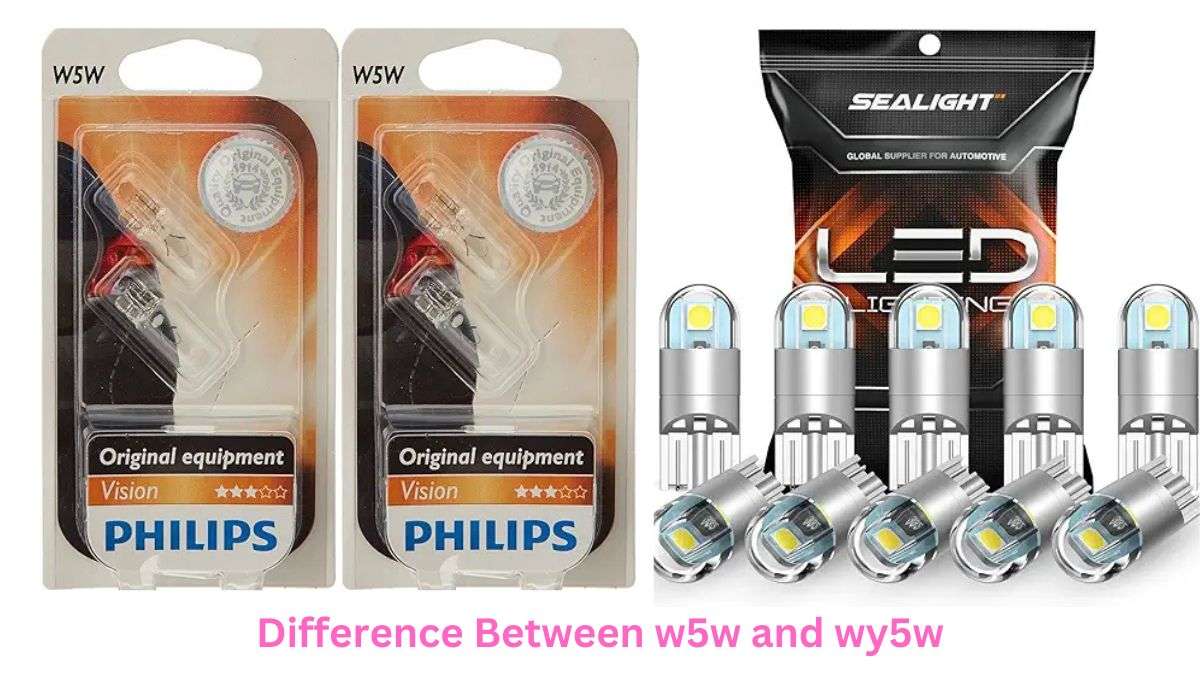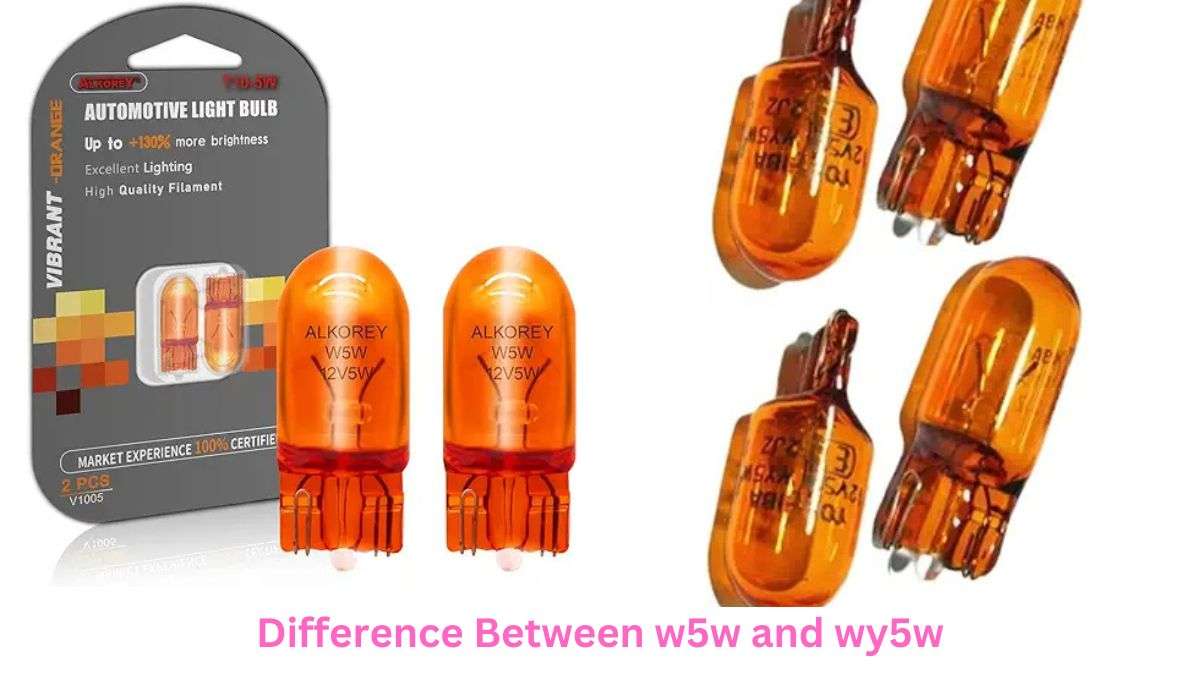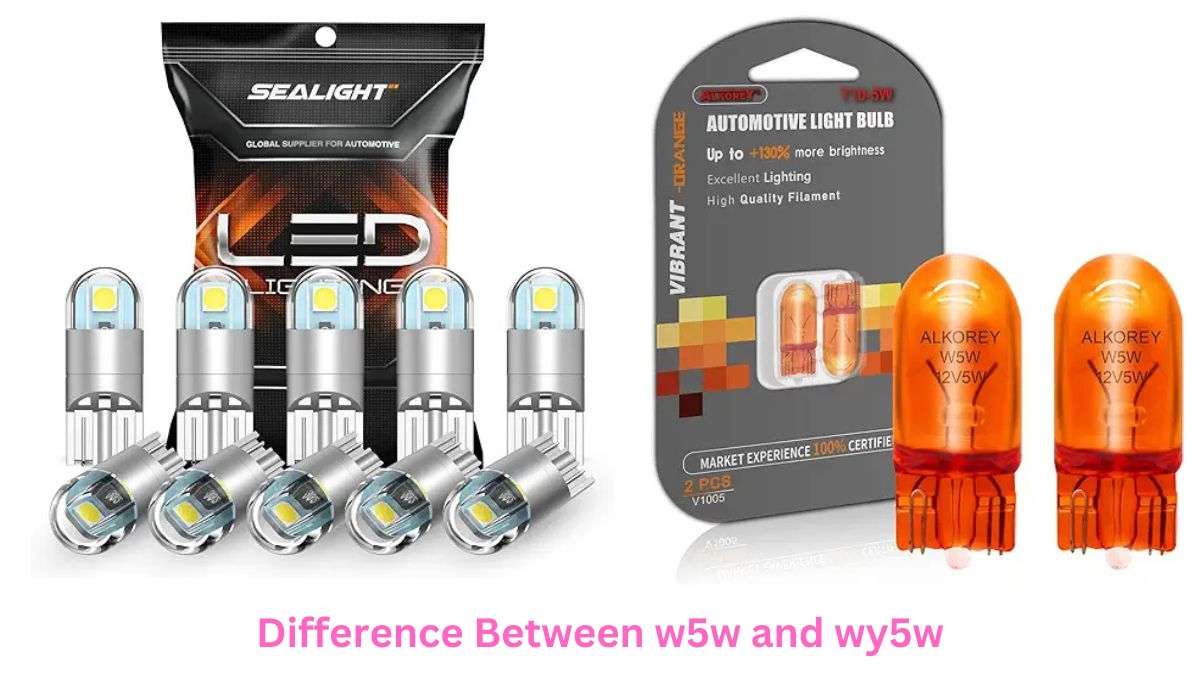Did you know that choosing the wrong type of automotive bulb can actually get you in trouble with the law in some countries? Many drivers are often confused about the difference between W5W and WY5W bulbs, and it’s easy to see why. These two bulbs may look similar, but they have distinct roles and technical specifications. The ‘Y’ in WY5W even stands for “Yellow,” hinting at the first key difference between them! Let’s break down the specifics so you can make an informed choice next time you’re at the auto parts store.
Understanding Basic Specifications
Before diving into the nitty-gritty, let’s look at the basic specs for W5W and WY5W bulbs to understand their core differences:
- Wattage and Voltage: Both W5W and WY5W bulbs typically operate on 5 watts and 12 volts, standard for automotive lighting.
- Base Type and Physical Dimensions: They share a similar T10 wedge base, making them compatible with many vehicle models, yet it’s essential to ensure the correct type for each application.
- Light Output (Lumens): The W5W usually provides a slightly higher lumens output than WY5W, thanks to its clear, white light.
- Lifespan: Both bulbs have a reasonable lifespan of 1,000–2,000 hours under normal conditions, though factors like climate and usage can affect longevity.
- Manufacturing Standards: Both bulbs comply with various regulations, including the European ECE R37 and U.S. Department of Transportation (DOT) standards, ensuring that they meet safety and quality guidelines.
Color Temperature and Light Output
The main difference between these bulbs lies in their color temperature and light output, which affects how and where they’re used in a vehicle.
- W5W’s White Light: W5W bulbs emit a clear, white light, making them ideal for illuminating areas like license plates or interiors.
- WY5W’s Amber/Yellow Light: WY5W bulbs give off a distinct amber or yellow hue, crucial for signal indicators. The yellow color helps drivers and pedestrians identify directional signals instantly.
- Visibility and Signaling: The white light of W5W is bright but can sometimes be too intense for signaling, while WY5W’s amber light is optimized for visibility in signaling, particularly in low-light conditions.
- Color Temperature: W5W bulbs have a color temperature around 3000K, producing a softer white, whereas WY5W bulbs have a color temperature around 2500K for a warm amber tone.
- Legal Requirements: In many regions, amber lights are mandated for turn signals, making WY5W the preferred option for these uses in Europe and the U.S.
Common Applications and Uses
Both bulbs are versatile and used across various vehicle applications. Let’s look at their typical uses:
- W5W Applications: Known for their bright white light, W5W bulbs are commonly used for license plate illumination, dashboard indicators, and interior lighting.
- WY5W Applications: WY5W bulbs are mainly used for signaling, such as side marker lights or turn indicators, where the amber hue is required for better visibility.
- Regional Variations: In Europe, amber side indicators are required by law, making WY5W bulbs essential for compliance.
- OEM Specifications: Many automakers specify these bulbs for distinct functions, with W5W reserved for interiors and WY5W used for signals.
- Aftermarket Uses: Aftermarket manufacturers offer both bulbs with options in LED technology for improved lifespan and energy efficiency.

Installation and Compatibility
Replacing bulbs is straightforward, yet there are some differences in installation and compatibility to keep in mind.
- Vehicle Fitment: Both W5W and WY5W are compatible with T10 sockets, though it’s important to confirm fitment with your vehicle model.
- Installation Process: Installing these bulbs usually requires a simple twist or snap to secure them in place, making it a quick DIY job.
- Compatibility Issues: W5W bulbs can sometimes be swapped with WY5W in terms of socket fitment, but their functions should not be confused due to the color and light output differences.
- Handling Techniques: Always handle bulbs with gloves to avoid oil transfer, which can shorten their lifespan.
- Tools Required: Basic tools like a screwdriver or trim removal tool may be needed to access certain bulb locations.
Cost and Value Comparison
When considering which bulb to purchase, cost and long-term value play important roles.
- Price Ranges: Both bulbs are affordable, with prices generally ranging from $5 to $15 for standard versions and a bit more for LEDs.
- Long-Term Costs: LED versions of W5W and WY5W may cost more upfront but often last longer and use less power, offering better value over time.
- Brand Comparison: Reputable brands like Philips, Osram, and Sylvania provide reliable, high-quality options for both bulb types.
- Availability: Both bulbs are widely available in automotive stores and online, with LED upgrades now commonly offered.
- Value Assessment: When used for their specific purposes, both bulbs offer great value for money and meet safety standards.
Legal Requirements and Regulations
Staying compliant with regional lighting laws is essential to avoid fines or other issues.
- European Standards: Amber lights are required for turn signals, making WY5W a must in Europe for indicators.
- US DOT Standards: Both bulbs meet DOT standards, though specific usage is regulated based on application.
- Asian Market: Asian countries often follow similar standards, with amber required for signaling.
- Color Restrictions: Many regions restrict bulb colors to ensure uniformity, so always verify requirements in your area.
- Safety Certifications: Both W5W and WY5W should be purchased with proper certification for legal and safe use.

Maintenance and Replacement Tips
Proper maintenance can extend the lifespan of your bulbs and ensure they perform as expected.
- Signs of Failure: Dimming, flickering, or discoloration are common signs your bulb may need replacement.
- Replacement Frequency: Depending on usage, replacing every 2–3 years or as needed is ideal for both bulb types.
- Cleaning and Maintenance: Regularly check for dust or residue build-up, as it can affect light output.
- Common Issues: Ensure you’re using the correct bulb type for each application to avoid compatibility issues.
- Professional vs DIY: Both W5W and WY5W are easy to replace, but professional help may be beneficial for those unfamiliar with vehicle lighting.
Conclusion
Knowing the difference between W5W and WY5W bulbs is essential to maintain your vehicle’s lighting system and stay compliant with regulations. While W5W bulbs provide a clean white light, suitable for interior and license plate illumination, WY5W bulbs give off the amber hue required for signaling. Always check your vehicle’s manual before making a replacement, and consult a professional if in doubt. Ready to make the best choice for your vehicle’s lighting? Visit your local auto parts store or consult with a certified mechanic for guidance on choosing the perfect fit!
Hi, I’m Malik Suhail—an SEO expert, web designer, and passionate blogger with 2 years of experience. I specialize in crafting content that is not only informative but also tailored to meet the needs of my readers.
I write about diverse topics, always striving to simplify complex ideas and provide valuable insights that resonate with my audience. Whether it’s about SEO strategies, web design trends, or blogging tips, I am committed to delivering well-researched, practical, and easy-to-understand information.
My mission is to help readers navigate the digital world with confidence and clarity. I believe in adding value through authentic content that inspires action and delivers results.


